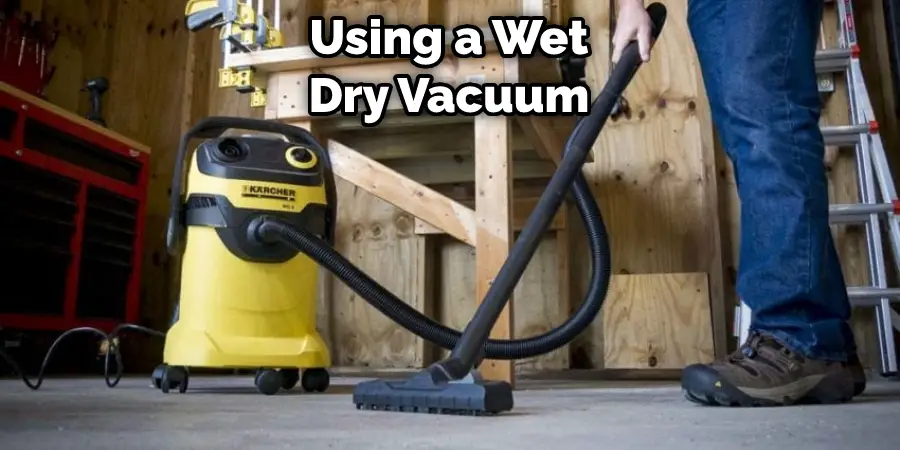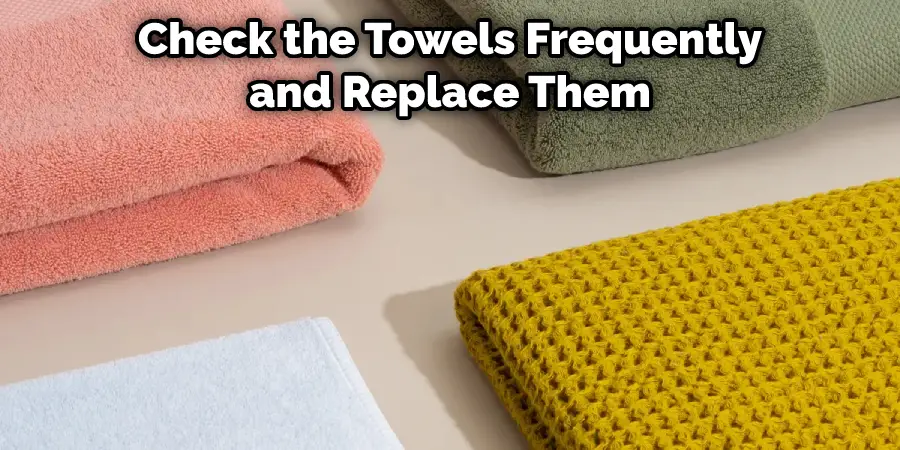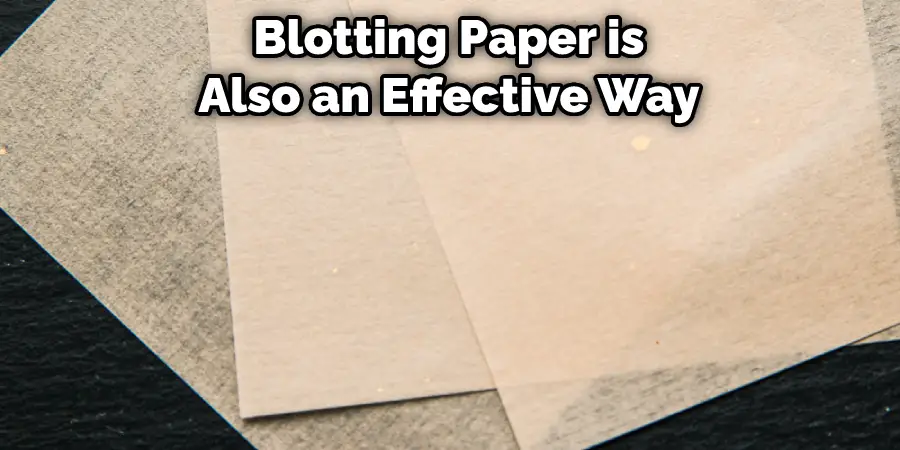If you’re a homeowner, then you know that having a well-maintained garage is key to keeping the rest of your home safe and secure.

But when water starts to seep into your garage or finds its way onto the floor, it’s important to act quickly and effectively. Fortunately, learning how to drain water from the garage floor isn’t as difficult as it may sound!
This tutorial will walk you through the steps needed to accomplish this task with ease so that you can get back to focusing on other aspects of maintaining your own space. Keep reading for detailed instructions and tips on how to drain water from garage floor without causing further damage.
What Is the Best Floor Drain in a Garage?
The right floor drain in your garage is essential for keeping water from pooling on your garage floor. Floor drains are designed to provide an efficient way of collecting and draining away the liquid that accumulates on the surface.
The best floor drain for a garage should be made of durable material, have a large enough capacity to handle sudden influxes of water, and feature an easy-to-clean design.
When it comes to selecting the best floor drain for a garage, one of the first factors to consider is size. A standard residential garage may require a 4” or 6” drain with a minimum 2” deep sump area (the hole in which water collects).
If you plan on using your garage space as a workshop or for other projects that require frequent cleaning, you may want to opt for a larger drain size such as 8” or 10”.
Material is another important factor to consider when selecting the best floor drain in your garage. Many floor drains are made from cast iron and other metals, which can be durable but can also corrode over time if not cared for properly. Another option is PVC (plastic) floor drains which offer good durability, lightweight construction, and easy installation at an affordable price.
Can I Put a Drain in My Garage Floor?

Yes, it is possible to put a drain on your garage floor to drain water away from the area. The best way to do this is with a sump pump and basin system. A sump pump is a device that pumps water out of an enclosed space like a basement or garage.
It’s typically installed either at the lowest point in the floor or in a designated low spot. The sump pump then pumps water out of the basin and into a drainage system or away from the building.
Installing a sump pump can be complicated, so it’s best to leave this job to an experienced contractor who is familiar with plumbing and electrical work. They will know the best type of pump to use and how to correctly connect it to the drainage system.
Additionally, they may need to cut a hole in the concrete slab or dig out an area for the basin itself. Once installed, the sump pump will need regular maintenance and testing to ensure that it’s working properly.
In some cases, installing a drain isn’t practical or necessary. In this case, you can try using other methods to keep water away from your garage floor, such as sealing any cracks in the foundation or redirecting rain gutters away from the building. Another option is to place gravel around the perimeter of the garage so that water has somewhere else to go instead of pooling on your floor.
8 Methods How to Drain Water from Garage Floor
1. Use a Shop Vacuum
One of the easiest ways to remove water from your garage floor is to use a shop vacuum. Shop vacuums are designed to suck up large amounts of water, and they can be rented or purchased from most hardware stores.
Be sure to empty the vacuum regularly, as it can quickly become full when used on a wet floor. While shop vacuums work well0 for small areas, they may not be suitable for larger garages. Though they are powerful, they may not have the capacity to suck up larger amounts of water.
2. Use a Wet/Dry Vacuum
Another option for removing water from your garage floor is to use a wet/dry vacuum. Wet/dry vacuums are similar to shop vacuums, but they are specifically designed for use on wet surfaces. Wet/dry vacuums can be rented or purchased from most hardware stores.

When using a wet/dry vacuum, it is important to make sure that the hose and filter are designed for use on wet surfaces. Once you have ensured that the vacuum is properly suited for wet surfaces, begin by positioning the nozzle over the area of standing water.
Make sure to move the nozzle slowly and steadily to ensure that all of the water is collected. After you have removed as much water as possible, empty the vacuum’s filter and hose before
3. Use a Squeegee
A squeegee can also be used to remove water from your garage floor. To use a squeegee, simply push it across the wet floor in order to collect the water on its blade. Be sure to empty the water from the squeegee regularly, as it can quickly become full when used on a wet floor.
Once you’ve gone over the entire floor with the squeegee, you will likely need to use a mop to remove any remaining water. This is especially true for textured floors, where the squeegee may not be able to get into all of the nooks and crannies in order to remove all of the water.
4. Use a Mop
If you don’t have a shop vacuum or wet/dry vacuum, you can use a mop to remove water from your garage floor. To do this, simply dip the mop head into a bucket of clean water and wring it out so that it is only slightly damp. Then, mop the wet floor in order to collect the water on the mop head.
Be sure to empty the mop head regularly, as it can quickly become full when used on a wet floor. Once the mop head is full, empty it into a bucket or drain and wring out the mop again to repeat the process. This method is most effective on smaller amounts of water.
5. Use Towels

Towels can also be used to soak up water from your garage floor. To do this, simply place towels over the wet areas of the floor and allow them to absorb the water. Be sure to check the towels frequently and replace them with dry towels as needed.
Once the towels have absorbed all of the water, dispose of them safely. If your towels become soaked quickly, you may want to consider using a mop or a wet/dry vacuum cleaner to speed up the process. While towels are effective for small water spills, they may not be the best option if there a large amount of water to be drained.
6. Use a Sponge Mop
If you don’t have towels available, you can use a sponge mop to absorb water from your garage floor. Sponge mops are designed specifically for absorbing liquid, and they can be purchased from most hardware stores or home improvement stores.
To use a sponge mop, simply dip it into a bucket of clean water and wring it out so that it is only slightly damp. Then, mop the wet floor in order to collect the water on the sponge head. Be sure to empty the sponge head regularly, as it can quickly become full when used on a wet floor
7. Use Blotting Paper
Blotting paper is also an effective way to remove water from your garage floor. To use it, simply lay the paper down on the wet surface and press firmly. The absorbent material in the paper will soak up any excess moisture, allowing you to dry out the area quickly.
Be sure to replace the paper regularly, as it can quickly become saturated when used on a wet floor.

8. Use a Wet/Dry Vacuum with Squeegee Attachment
Finally, if you have access to a wet/dry vacuum with a squeegee attachment, you can use this tool to clean up any water from your garage floor easily. Simply attach the squeegee accessory to the vacuum hose and push it across the floor just like you would with a mop.
The vacuum will suck up all of the water and leave your garage floor dry and clean. Be sure to empty the contents of the vacuum into a drain or outside to ensure that no water is left standing in your garage.
Conclusion
By taking the steps outlined in this blog post, it’s possible to prevent flooding and water damage in your garage. This process may seem daunting, but with a few basic tools and some elbow grease, you can safely clean up any water that may be collecting on your garage floor.
Taking the time to correctly drain water from your garage floor is essential to protect it from further damage, so don’t hesitate and tackle this necessary procedure today!
Who knows – maybe draining your garage floor will give you that extra bit of motivation needed to finally clear out those boxes and organize your space! Now that you know How to Drain Water from Garage Floor, take action now for a beautiful, safe, and dry workspace.

